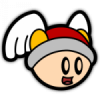
 It would seem that whatever being or force brought these creatures into existence simply made one of each race of enemy and then cloned it to create the armies that now infest the land; I see no evidence that there are any young or any elderly, or that any are shorter/taller or fatter/thinner than others, or even that any seem to have a different sense of fashion. They move in the same way and predictably make the same decisions as thier brethren when placed in the same situation. In some of my more recent adventures I have even noticed the odd occurance of seemingly smarter, stronger or more powerful enemies who seem be still be clones of the same enemy but with different coloured skin and/or clothing.
It would seem that whatever being or force brought these creatures into existence simply made one of each race of enemy and then cloned it to create the armies that now infest the land; I see no evidence that there are any young or any elderly, or that any are shorter/taller or fatter/thinner than others, or even that any seem to have a different sense of fashion. They move in the same way and predictably make the same decisions as thier brethren when placed in the same situation. In some of my more recent adventures I have even noticed the odd occurance of seemingly smarter, stronger or more powerful enemies who seem be still be clones of the same enemy but with different coloured skin and/or clothing. My question to you, good forum members is if you see any merit in attempting to provide more variety to our game worlds by solving this problem. Obviously back when Super Mario Brothers was new there were some pretty extreme limitations on memory, but this is a problem that is significantly reduced for us in the current day-and-age. There's also the argument to be made that producing variations on our enemies creates a significant amount of additional work for the art department -- and this is a very valid point which may well apply to some games, particularly hobbyist and indie efforts more so than industry titles -- but there are ways to work around this. With 3d models we're able to programmatically alter small details of our characters without causing a loss of quality; it would be relatively easy to produce slight variations in height and weight of our enemies for example. There are also games for which this wouldn't be appropriate, and having all enemies of a certain type appear identical does have it's uses. In an RTS for example the player needs to quickly and correctly discern the type (and in some cases condition) of his/her own and enemy units without having to think about it. Varying the units in this type of game would just make this more difficult and would likely result in mistakes identifying the type of units. Your thoughts?








